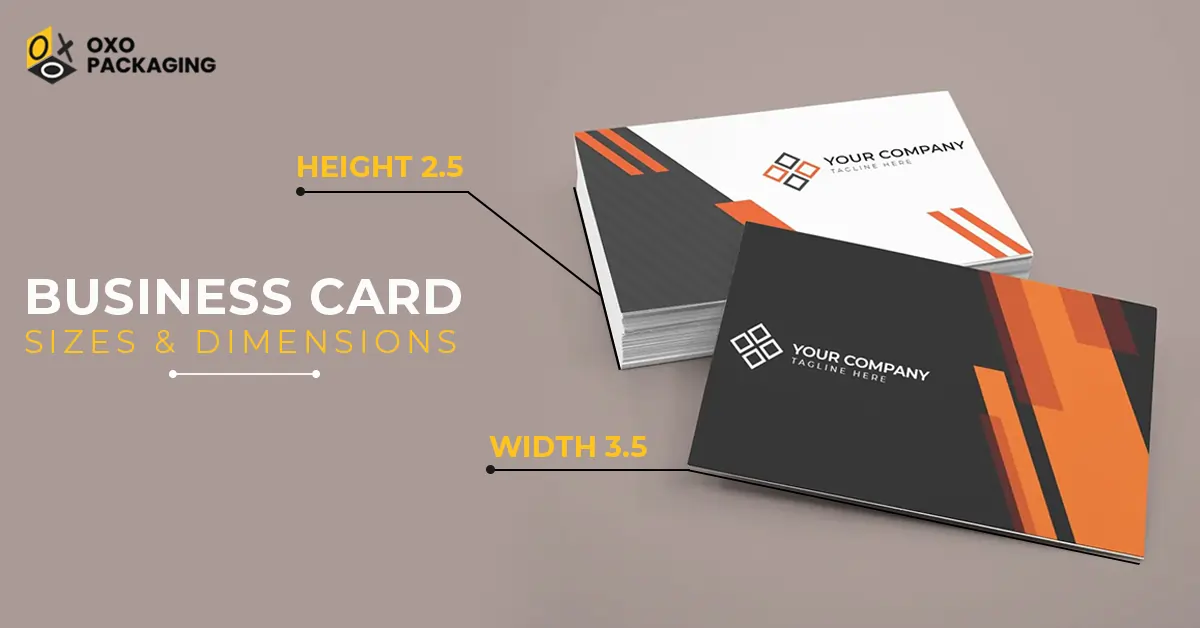How Business Card Size Plays Role in Branding

Business cards are powerful marketing tools you can keep in your pocket every day. Those little rectangular pieces of paper might seem insignificant but don't be fooled. They hold immense potential to leave a lasting impact on potential clients. One critical aspect of these mini-marketing marvels is their size.
It is best practice to ensure that your business card size meets your country's regulatory requirements. In the US, a business card is typically 3.5 x 2 inches in size, making it comparable to the majority of credit cards.
In this guide, we will delve into the world of business card sizes and explore how getting it right can give your business the edge it needs.
The Business Card Size Matters!
Businesses pay close attention to the design of their business cards and boxes for business cards. So, the market has high competition to make your card stand out. The first thing to consider in designing these tiny but powerful cards is their size. As we mentioned before, the standard size of business cards in the US is 3.5 x 2 inches. The reason is that these cards easily fit into pockets, wallets, and purses. The folks in the USA are familiar with this size.
But there is not any law that says you can design your card only in this size.
There is a slimmer, sleeker, and more modern version, measuring around 3.5 inches by 1.75 inches. But the size options continue; you can also get square cards, round cards, and oversized cards that break away from the norm.
A larger card can indicate a sense of importance, while a smaller card can be a tiny but valuable reminder. The size you choose depends on the message you want to convey.
We hope you got the idea of what size is a business card in the USA.
Guidelines on Business Card Dimensions
There are thousands of business card size templates available online to choose from. Moreover, you can design a template on your own. But here are some of the crucial factors that you need to keep in mind while creating a business card template;
1. Bleed Area:
Imagine you are designing a business card with a background color or image that goes to the edge of the card. When you send this design to a printer, they will print it on a larger sheet of paper and then cut it down to the actual business card size. However, getting a precise cut can be challenging, and slight shifts might occur during the cutting process.
This is where the "bleed area" comes in. The bleed area is an extra space that extends slightly beyond the actual dimensions of your business card design. It is a safety net to account for those minor shifts that can happen during printing and cutting.
Typically, a bleed area is around 0.125 inches (or about 3mm) on all sides of the business card. So, if your business card is 3.5 inches by 2 inches, your design with bleed would be 3.75 inches by 2.25 inches.
2. Inches and Pixels
A business card measuring 3.5 inches by 2 inches may sound simple, but its impact is immeasurable. Imagine all the vital details you can squeeze into that space:
- your name,
- title,
- company name,
- contact information,
- and even a sprinkle of your branding essence.
But hold on—what about the digital world? In pixels, the standard size is 1050 pixels by 600 pixels. The business card size in pixels ensures your digital representation is as crisp as your physical card.
3. Safe Printing Area
The safe printing area, sometimes called the "safe zone," is the region within your design where you should keep all your critical text, logos, and essential elements.
While the bleed area accounts for slight misalignment during cutting, the safe printing area accounts for the potential variability in how the card might be trimmed.
Keeping all essential elements, such as your company name, contact details, and key logos, within the safe printing area is recommended to ensure that your vital information stays intact and easily readable. This area is usually about 0.125 inches (3mm) from the trim line (the final size of your business card after cutting).
4. Font Size
Choosing the right font size for your business card is like selecting the perfect tie to complement your suit—the subtle detail can make or break the look. A standard business card font size of around 8 to 10 points ensures your information remains readable, even for those without 20/20 vision.
Here are some of the most common fonts that you can use for your business card:
- Designer
- Royal Knight
- Modern Deluxe
- Artisan Signature
- Jelly
- Vintage Culture
- Samantha Craft
- Stoner Sans
- Letter Woven
- Lovely Valentine
Additionally, you can also get inspiration for professional fonts online.
5. Converting Inches to Centimeters: A Global Perspective
Considering the global nature of modern business, it's helpful to understand the size of conversions. The standard size of business card in centimeters is approximately 8.89 cm by 5.08 cm.
Knowing the standard business card size in cm is particularly handy when dealing with international clients or suppliers. It showcases your attention to detail and respect for diverse standards.
The Bottom Line
As a business owner, your journey toward success begins with countless decisions, and the business card size is one of them. Remember, it's not just about numbers; it's about the message you are sending.
The standard business card size is 3.5" x 2", but that does not mean you cannot experiment with the new dimensions. Create a card that conveys the essence of your company. If you need assistance designing your cards, you can seek help from the professionals at OXO Packaging. We would be happy to help you make your business a market highlight.
After all, in the business world, every detail, no matter how small, can have a significant impact.




